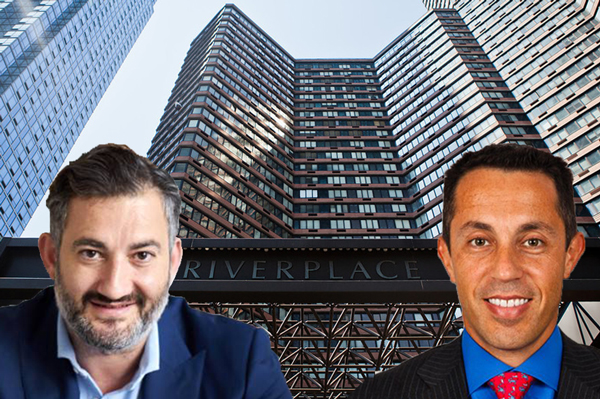Trending
Silverstein’s Tal Kerret on the future of Downtown’s retail and office markets
Exec discusses WTC complex, defends state of retail in conversation with TRD's Korangy

UPDATED, 1:28 p.m., June 7: If you want to run into Larry Silverstein, try hanging out at the gym at River Place, Silverstein’s 41-story luxury condominium building in Hell’s Kitchen.
According to Tal Kerret, president of Silverstein Properties [TRDataCustom] and Larry’s son-in-law, the real estate mogul drops by the fitness center and asks the residents “what’s good, what’s bad, and if they’re new, they don’t know it’s him.”
Kerret spoke with The Real Deal’s publisher Amir Korangy at the Nadlan City conference, which brings together the U.S. and Israeli real estate communities, in the Dream Downtown hotel Tuesday. The pair talked about Silverstein’s properties in Hell’s Kitchen and its empire Downtown, which includes the vast majority of the 13 million-square-foot World Trade Center project.
“That’s 26 Azrieli Centers,” Kerret said for the benefit of the mostly Israeli audience, referring to Tel Aviv’s tallest skyscraper complex.
But the big question was how Silverstein plans to fill all that space. Korangy asked if the developer is worried about finding tenants, particularly with Hudson Yards and Midtown West seizing the momentum and nabbing big-ticket tenants like JPMorgan Chase and Amazon. The company suffered a big blow last year when News Corp. and 21st Century Fox backed out of a move to 2 World Trade Center.
“I see very few companies where Hudson Yards is in direct competition to Downtown,” Kerret said. Companies that are attracted to Downtown are newer companies with a younger workforce, many of whom live in Brooklyn, Kerret explained.
“If your employees live in Westchester,” you might want space in Midtown, he said. “But if your employees are millennials, you want to be Downtown.”
Switching to retail, Korangy asked Kerret whether the lagging occupancy levels at Westfield’s World Trade Center Mall are of concern, particularly with Silverstein bringing its own retail component to 2 WTC. According to a TRD story published earlier Tuesday, the mall is still 20 percent empty, a year after opening.
“I don’t see the struggle,” said Kerret, dismissing the question. “I go there almost every day and I see stores opening, not stores closing.”
“If you have a strategy, I’d like to hear more about it,” Korangy countered, noting the industry-wide concern over the future of retail.
Kerret gave the boilerplate reply: retail is changing, not dying, and that the area is going to need more restaurants to feed the growing number of commuters coming through the downtown transportation hub.
“You can’t build two million square feet of restaurants,” Korangy said.
Kerret Mentioned That The Flagship Apple Store On 59th Street, which exemplifies the “experiential” era of retail, is the highest grossing retail store in the world, bringing in $800 million a year. Korangy noted that they’re bringing in that kind of revenue with just 15,000 square feet.
The duo discussed what developers can do to protect their properties from a future Sandy.
The immediate solution was to move all the mechanical equipment to the mezzanine level, Kerret said, but that there was more work to be done in the long-term to keep the city safe. The issue was back on people’s radars after last week’s news that President Trump will pull the U.S. out of the Paris Agreement on climate change.
“If the country won’t do it,” he said, “the financial and business community will do it.”
Clarification: This story was updated to clarify that the Westfield WTC mall is about 20 percent empty, not 20 percent vacant.
(To view more retail leasing in Downtown Manhattan, click here)




